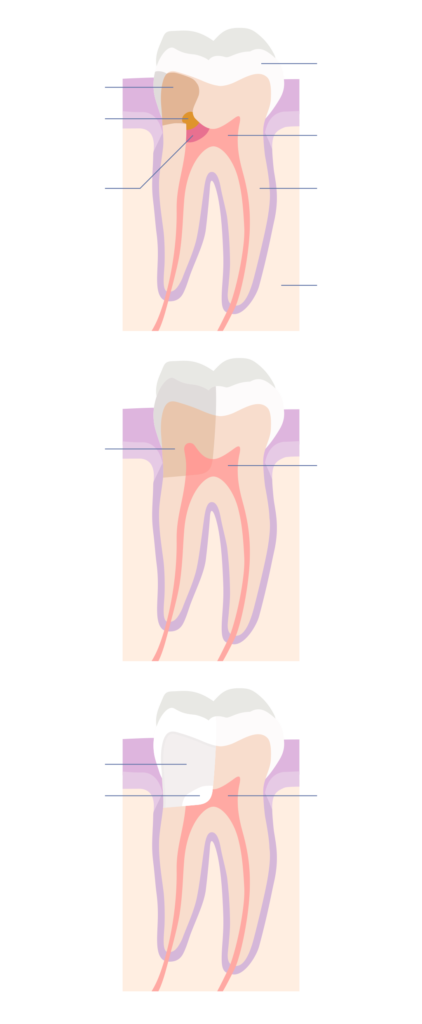Vital pulp therapy
We can advise if your tooth is suitable for vital pulp therapy
Vital pulp therapy (VPT) is a minimally invasive procedure designed to preserve the dental pulp (nerve) when it is affected by dental caries, trauma, fillings or dental anomalies. This procedure can save the tooth without the need for root canal treatment if the nerve, or parts of the nerve, remain alive (vital) before treatment. The diagram below shows a fractured incisor with an exposed pulp treated with VPT.
A fractured tooth repaired using vital pulp therapy

We can undertake this treatment in teeth that do not have a history of pain or that cause occasional pain.
Act early for the best chance to avoid root canal treatment
Teeth that are suitable for VPT need to be treated before bacteria invade and colonise the dental nerve causing complete death of the pulp. Often, the living portions of the nerve can be preserved, the affected and lifeless portions removed, and the tooth restored. Teeth with completely dead pulps should be treated by root canal treatment or they will need extraction.
Types of Vital Pulp Therapy
The type of treatment we use can vary from a direct pulp cap to a pulpotomy depending on the extent of affected tissue and the amount of pulp tissue to be preserved. A direct pulp cap procedure leaves the entire nerve tissue in place. A partial pulpotomy removes a portion of the nerve tissue within the visible crown. A complete pulpotomy removes all the nerve tissue from within the visible crown area.
The diagram below shows: A) caries advancing into the nerve; B) affected tissue is removed leaving normal (healthy) pulp tissue; C) the remaining normal pulp is capped with suitable biocompatible material and finished with a final bonded restoration.
When the dental nerve is exposed, if the tissue is healthy, we use a pulp capping or pulpotomy agent to cover the exposed nerve. There are various types of materials available including a pure calcium silicate cement. After the material has set, we may place a temporary filling to see how the tooth responds and then get you to return for a final filling. Alternatively, you may have a permanent bonded restoration over the capping material during the same visit. These variations depend on the specific condition of your tooth.
The whole procedure is done with the aid of a microscope to ensure the best results.
An infected tooth repaired using vital pulp therapy


